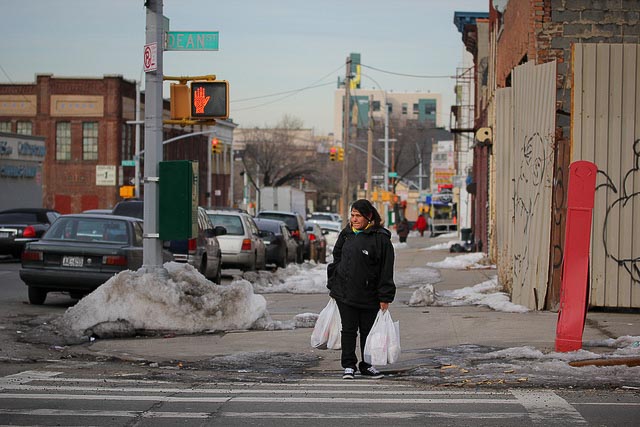Loud music. Conflicting schedules. Crying babies. They're all part of what you can expect when living in close proximity to other people. Inconvenient noise and disagreements with neighbors may even be considered hallmarks of urban life.
But sometimes, those conflicts get to be too much. In many cities, residents have the option to call 311 - a general city hotline for service requests - when they can't or don't want to handle the issue on their own. For a pair of researchers, New York City's 311 data system offered a unique opportunity to study the conditions that exacerbate the use of external authorities when dealing with neighborhood conflicts.
Joscha Legewie, an assistant professor at New York University and Merlin Schaeffer, a research fellow at the WZB Berlin Social Science Center studied 7.7 million 311 service requests in New York City from 2009 to 2013. The data, which is geocoded so researchers can see exactly where the complaints occurred, cover every type of conflict imaginable, from noisy neighbors to public drinking to cars blocking driveways.
They argue that there's a clear relationship - albeit a complex one - between those complaints and the racial composition of neighborhoods.
Studies have already established that racial diversity - or more specifically how individuals respond to it - is a key factor in understanding conflict. Their new research supports this baseline argument, but it emphasizes that some places with racially diverse populations report higher levels of conflict than others.
The team discovered that 311 complaints are most frequent in places where there dividing lines between the city's various racial enclaves aren't clearly delineated. As areas dominated by one race bleed into another residents were more likely to call 311 with a complaint about their neighbors.
That trend doesn't exist in areas surrounded by neighborhoods of a similar racial composition, nor does it exist in places where racial boundaries are starker.
Their research is based on the hypothesis that in places with "fuzzy" boundaries, residents feel more protective of their "turf."
"The number of complaint calls increases by 26 percent as we move from areas surrounded by similar neighborhoods to those that lie within fuzzy edges between ethnically homogeneous areas," the team wrote.
Why does that happen? What makes people living in these ambiguous areas more likely to call 311 about their neighbors?
Legewie and Schaeffer acknowledge their study is imperfect. They can't know for sure the motivations of people calling 311. But they think "fuzzy" boundaries may trigger defensive behaviors partly because the prevailing community identity is unclear - is this a Hispanic neighborhood, a white neighborhood, or maybe even a diverse neighborhood? In the face of ambiguity, residents may feel the need to stake their claim when issues arise.
In contrast, well-defined boundaries may reflect long-accepted (and less-contested) divisions between communities that reduce the need to assert one's position.
Their findings mark an important development in the body of sociological research on conflict. But it also has practical implications.
From a policy perspective, the method developed by Legewie and Schaeffer to identify fuzzy boundaries may be helpful in determining where conflicts are most likely to erupt.
More information is needed for policymakers to act on this research. But pre-emptively identifying the places prone to conflict could be central to improving the social fabric of and overall quality of life in any rapidly changing city.

